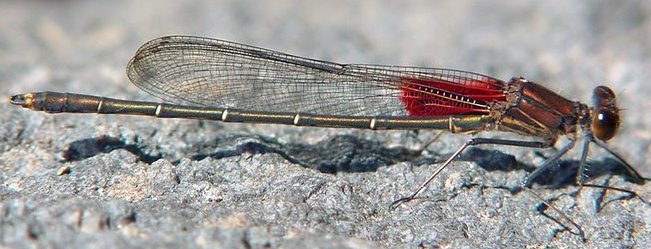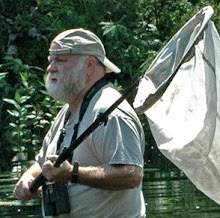Deer Ked
I volunteered to do a guest blog for my good friend Dave Small after he sent me an e-mail inquiring whether I might know the identity of an insect in an image he attached with his message. I didn’t quite understand the story at first, like why two hunters were involved, and why the insect was adhered to hard candy. The image was clear enough, though, that I could tell what the creature was, and that this was not a tall tale evolved from heavy drinking.
Deer and related animals play host to a variety of parasitic invertebrates, including the familiar, slow-moving ticks. Such blood-feeding creatures are quick to abandon a deceased host, however, and so animals harvested during the hunt often yield some strange, living cargo during inspection and dressing. The specimen discovered by these hunters is an insect known as a “louse fly,” among the most peculiar of insect parasites.
They are much more nimble than ticks, dodging attempts to catch them as they skirt through a host’s fur. Their flattened shape, top to bottom, and talon-like claws enhance their ability to slip between hairs and grip the hide of the host, avoiding licking and biting efforts to dislodge them.
Members of the fly family Hippoboscidae, most known louse flies are actually parasites of birds. The most infamous member of the family, though, is the “sheep ked,” well-known at least to those who manage flocks of ovine livestock. The adult flies are wingless, but find each other easily for mating when the host animals crowd together
Back to the specimen the hunters found, and collected by sticking it with a piece of hard candy. That would probably be a “deer ked,” Lipoptena cervi. Here is a terrific image of a related Lipoptena depressa from northern California. Both species have a life history that is typical of the entire family of louse flies, but truly mind-blowing compared to other insects
Female louse flies do not lay eggs. They grow one offspring at a time, within their bodies, much like mammals. A single larva develops inside the equivalent of a uterus, feeding from a “milk” gland. When mature, it is “born alive,” dropping to the ground where it immediately buries itself and pupates. An adult fly emerges weeks later. Deer ked are winged, at least initially, but females that have found a host will break off their wings, the better to maneuver through the dense, coarse hair of their host.
While keds are known to transmit certain diseases from host to host, they are for the most part not economically important. Consequently, little is known about them. Kudos to our hunter friends for bringing this one into the spotlight.
Thanks Eric for answering the Identification question... A pretty interesting life history... To read more insect related stories see Erics Blog on Blogspot. Thanks to Bill Rose and the staff at Vegetation Control Service for capturing this neat insect and passing it along. For the record I do not know the flavor of the hard candy.. nor will I seek to find out... DHS
dave@dhsmall.net
http://www.pbase.com/dhsmall
Book Review: Insectorama
-
One of the benefits of having written one or more books is that as an
author you are then presented with opportunities to review proposals,
manuscripts, an...
4 days ago
.jpg)

